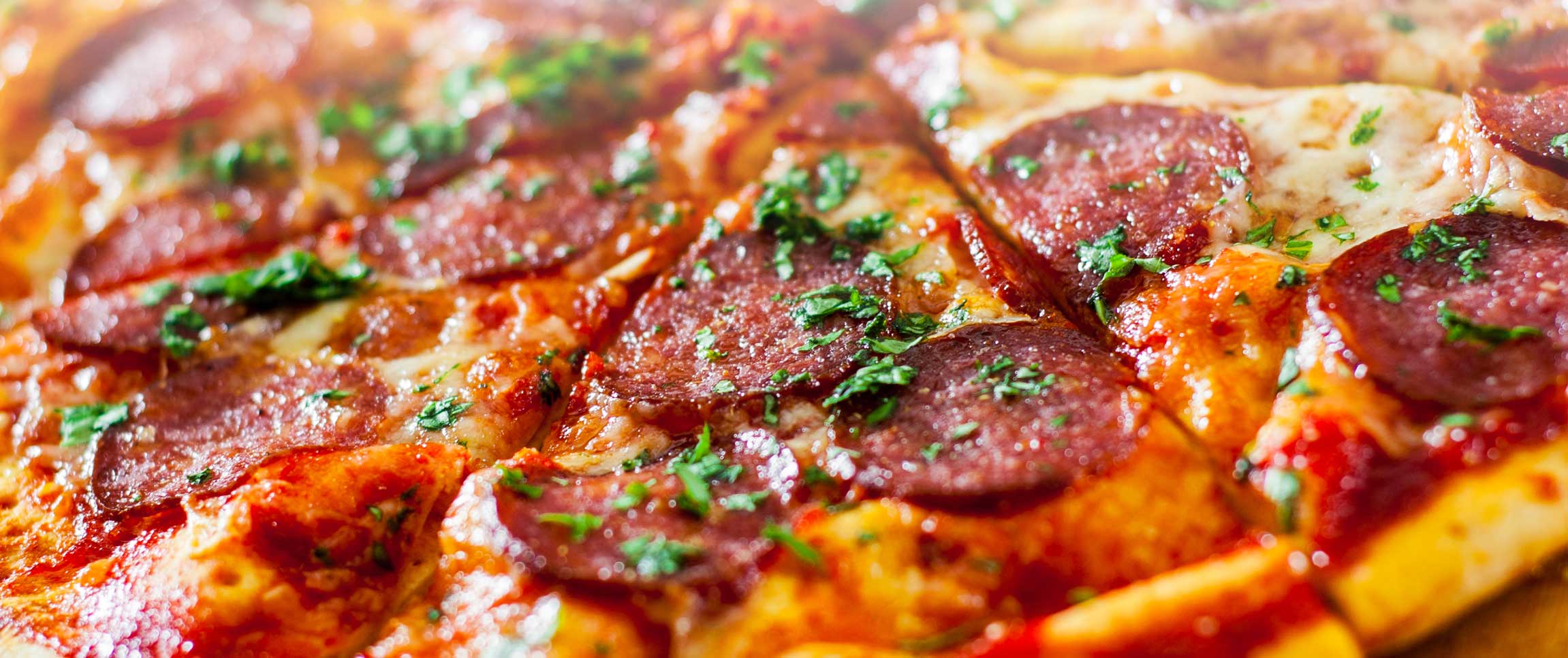If you have pizza on your menu, then chances are you offer pepperoni as one of your toppings. It’s an American classic, ubiquitous enough for the name to be nearly generic. The problem is that pepperoni is hardly uniform and can vary widely from one brand to another.
Choosing the right one is paramount, both for consistency and food cost, to ensure you’re putting the best choice on your pies. So, how do you make sure you have the right pepperoni? First, you need to know the right questions to ask. Answer those and you’re well on your way to ensuring you have the right piece of cured meat to work with.
Flat vs Cup
First impressions mean a lot. Do you want your pies going out with flat pieces of pepperoni, where the oils have been allowed to form a sheen across the cheese, or curled and cupped where the pepperoni captures its own amber liquid in a gorgeous little pool?
There’s a bit of a debate as to what causes cup-n-char and how to properly achieve it but most agree the major factors are thickness (a medium thickness helps promote cupping) and using a natural or collagen casing. Having a slice that is too thick or too thin or removing the casing will lead to flatter slices.
Thickness
In addition to the cupping effect, the thickness of your slices can have huge consequences. Thin slices can crisp up almost to the point of crunchiness while thicker slices can increase toothiness and mouthfeel. Beyond taste, the thickness can also have a huge impact on your food costs. Most distributors have a range of options or can customize to fit your needs. However, if you have the right equipment and trained staff, in-house slicing could be the right option to allow you the flexibility of differing thicknesses based on your culinary needs.
Fat Content
Fat can be tricky with pepperoni. If you have too little it can completely dry up and not leave behind the grease that adds its flavors to the rest of the pizza. But if you have too much you run the risk of it shrinking down to nearly nothing and leaving a greasy mess. Sure, the higher fat pepperonis might save you a few bucks on food costs but your diners may think you’re being skimpy when the toppings look tiny and sparse. Try and find the right balance between fat and lean. 38% - 40% is a good range to look for—too much higher and you’ll start to notice the shrinkage problem.

 The Grind
The Grind
Pepperoni is simply a mix of beef and pork trimmings with spices added. It’s straightforward but it’s also easy to produce massively different results. Beyond the obvious differing ratios, find out if the meat used is fresh or not. To control costs, or produce a less expensive product, some producers will buy only when prices dip or buy huge, bulk purchases at a discount that they then freeze instead of buying fresh as needed.
While consistent and stable prices can help with budgeting, pepperoni made from frozen ingredients might not be the best choice for your restaurant. Cell walls break down and burst during the process leading to a less firm pepperoni that can be prone to mushiness, inconsistent flavors and uneven coloring.
The Cure
Curing meats is a classic and often time-consuming tradition and this added time can increase cost. New technologies can cut that time down but at what cost to the product flavor? Artificially smoked meats might not have the same depth of flavor as hardwood smoked pepperoni. Using dextrose, instead of sugar, can speed up the process but it may result in less even flavors and colors, leaving you with an inconsistent product that may not satisfy every time.
The Spices
Paprika. That’s the key to pepperoni’s deep, red color and distinct flavor. Sure, the color can be achieved with artificial food colorings and a little capsaicin for heat but it’s unlikely it will taste exactly right or achieve quite the color you expect.
Real spices are key but come with some issues of their own, such as moisture content and intensity. Paprika extract, or oleoresin, is a natural process using alcohol to the draw out the natural oils and intense flavors of the peppers. Once the alcohol is removed, the resulting pepperoni is drier with better intensity and consistency. Additionally, paprika extract is more stable than typical ground spices, allowing it to hold up better at high heats and not diminish in flavor over time (critical for properly aged pepperoni).
Ask your providers all these questions and you’ll be able to find the right pepperoni for you and your diners. It might be a premium meat with a thinner cut or a thick mid-range that works best for you. The answer might not be what you expect once you answer all these questions.
Just make sure what you choose satisfies your needs and the consistency you demand. The last thing you want is a customer asking the question - “Why isn’t this as good as the last time we were here?”



